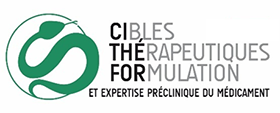Les conférences auront lieu dans l'Amphithéâtre BRUNTZ– 2ème hall
Le programme est le suivant :
- 09h15 Accueil du Pr Raphaël DUVAL, Doyen de la Faculté de Pharmacie
- 09h30 Prof. Zilin Chen and Prof. Haibing Zhou "Présentation of Wuhan University and of the Faculty of Pharmacy"
- 09h45 Prof. Zilin Chen (Vice Dean of School of Pharmaceutical Sciences, Wuhan University) "Solid Phase Microextraction and Capillary Electro-chromatographic Column Technology for Pharmaceutical Analysis"
- 10h15 Prof. Haibing Zhou (Vice Dean of School of Pharmaceutical Sciences, Wuhan University) "Novel Hybrid Conjugates with Dual Suppression of Estrogenic and Inflammatory Activities Display Significantly Improved Potency against Breast Cancer"
- 10h45 Haiyan YU (Ph D Student EA 3452 CITHEFOR) "Oral bioavailability studies of S-nitrosoglutathione using intestinal barrier models by liquid chromatography coupled with mass spectrometry after labeling with the isotope nitrogen 15"



